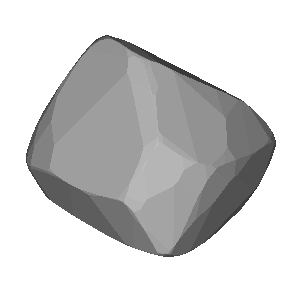2002-01-31 / TYC 2495-00265-1 / (361) Bononia
| # | OBS | Observer | Occ | Meth. | Instr. | CC | TSRC | UT1 | UT2 | UT3 | UT4 | UT2E | UT3E | Dur. | Chrd |
|---|---|---|---|---|---|---|---|---|---|---|---|---|---|---|---|
| 1 | show | Roger Venable | O+1 | VIS | M280 | US | RAD++ | 01:38:10 | 01:42:54.0 | 01:42:56.9 | 01:47:20 | 0.2 | 0.1 | 2.90 | 36.2 |
| 2 | show | Roger Venable | O+2 | VIS | M280 | US | RAD++ | 01:38:10 | 01:42:58.9 | 01:43:00.5 | 01:47:20 | 0.1 | 1.60 | 20.0 | |
| 3 | show | Roger Venable | O+3 | VIS | M280 | US | RAD++ | 01:38:10 | 01:43:02.9 | 01:43:03.9 | 01:47:20 | 1.00 | 12.5 | ||
| 4 | show | Rui Goncalves | O- | CCD | M254 | PT | |||||||||
| 5 | show | Andrew Elliott | O- | VID | M254 | UK | 01:29:00 | 01:43:00 |
5 observations found in db: euraster
Available (probably) matching predictions (click on the link to switch):| JPL#117 : c5b27ea1-0221-4104-a65e-50b0ae5238fc [db: observed] |
Using prediction c5b27ea1-0221-4104-a65e-50b0ae5238fc for map and profile fit
| Ellipse and circular profile fits to the timings (chords) |
|---|
|
|
Auto-Fit Result: Size = 7206 x 2 km a',b' = 3603.0, 0.9 km X0,Y0 = -105.5, -26.1 km Mean diameter = 115 km From 3 chords (VIS) You can enter space separated chord numbers (example: 11 4 8) or a method like VIS to ignore all visual timings, or a time source like RAD and NTP (but not GPS). If the plot disappears, then there are less than 2 chords left (too much ignored, go back with browser). Check SiMDA for size and mass data. Check Johnston Archive for satellites. |
Sky projection (artificial light) for occ. time: 2002-01-31, 01:42 UT (JD = 2452305.571)
| DAMIT | Q | P (h) | λ, β | JD0 | JD-JD0 | φ0 | Version | Modified | Vol-equiv D | Cmnt |
|---|---|---|---|---|---|---|---|---|---|---|
| # 1173 | None | 13.806 | 115°, 45° | 2.446885e6 | 5420.6 | 0.0° | None | None | not scaled | 2016-01-04 |
| # 1174 | None | 13.806 | 294°, 13° | 2.446885e6 | 5420.6 | 0.0° | None | None | not scaled | 2016-01-04 |


Image size: 300px. Transparent image background for copy & paste
| Map with groundtrack and observer stations |
|---|
| Event Details |
|---|
Occultation UUID [and DB] : c5b27ea1-0221-4104-a65e-50b0ae5238fc [observed] Occultation Date + Time : 2002-01-31 at 01:36:31 UT +/- 0.07 min [1] Object Designation : (361) Bononia Orbit Class : MBA Star Designation : GDR3 0713709593343177216 Star Coordinates (ICRF) : RA = 09 00 12.1160, DE = +34 45 36.979 [2] Star Magnitudes : G = 11.89 mag, RP = 11.5 mag, BP = 12.11 mag Object Magnitude : V = 13.23 mag Estimated Magnitude Drop : 1.6 mag Estimated Max. Duration : 11.3 sec Object Mean Diameter : 142 km (src: astorb) Speed of the shadow : 12.5 km/s Elongation to Moon & Sun : 35° (sunlit = 94%), Sun = 163° Cross-track uncertainty : 13.0 mas = 21 km = 0.15 path-width (1-sig) RUWE and duplicate source : 1.03 mas, dup.src = 0 (0:false, 1:true) Ephemeris Reference : JPL#117 [1] time t0 of closest geocentric approach c/a, [2] including proper motion until t0 |
| More Data and Informations |
|---|
(If error 404: link not valid which means no data available)
| Aladin Sky Atlas |
|---|
| Aladin Lite direct link (has Gaia overlay) |